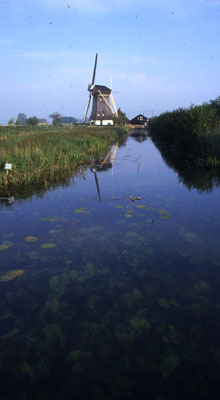 |
Ambassador profile
|
||
| Name: | Gradus Lemmen | |
| Function: | Site Manager | |
| Country: | Netherlands | |
| E-mail: | g.lemmen(at)natuurmonumenten(dot)nl | |
| Tel: | +31 35659 1840 | |
Organisation profile
|
||
| Organisation: | ||
| www: | www.natuurmonumenten.nl | |
| E-mail: | f.prins(at)natuurmonumenten(dot)nl | |
| Tel: | +31 35655 9933 | |
| Established: | 1905 | |
| Category: | NGO | |
| Number of staff: | 600 and 2000 volunteers | |
 |
| Site profile | |||
| Site name: | Naardermeer | ||
| Location: | North of the Netherlands | ||
| Land area: | 1,180 ha | ||
| Nearest urban settlement: | Amsterdam | ||
| Natura 2000 ID: | NL3000061 | ||
| www: | www.naardermeer.nl | ||
| Annual visitor count: | 30,000 | ||
| Majority of visitors from: | From the nearby regions, including Almere, Amsterdam, Amersfoort and Utrecht. | ||
| Site description: | Naardermeer
is a marshland region of 1,080 hectares in the centre of the Netherlands.
The region derives its greatest value from the fact that various rare
breeding birds and migrating birds that can be found there as well as
the rich variety of types of vegetation which are characteristic of
a marshland area that is fed with seepage. Naardermeer forms part of
the Vechtplassen region, which consists of various lakes and marshes
for which it functions as a core zone. |
|
|
| Priority species | |||
| Species code | Latin name | Common / local name | |
| 1134 | Rhodeus sericeus amarus | Bittervoorn | |
| 1149 | Cobitis taenia | Kleine modderkruiper | |
| 1318 | Myotis dasycneme | Meervleermuis | |
| 1903 | Liparis loeselii | Groenknolorchis | |
| 1082 | Graphoderus bilineatus | Gestreepte waterroofkever | |
| 101X | Anisus vorticulus | Platte schijfhoren | |
| All habitats (* indicates priority habitats) | ||
| Habitat code | Common / local name | |
| 3140 | Chalk oligo-mesotrofe still standing waters with bentic Chara spp. vegetations | |
| 3150 | Natural eutrofic
lakes with Magnopotamion of Hydrocharition vegetation. |
|
| 4010 | North-Atlantic wetland Erica tetralix | |
| 6410 | Grassland with Molinia
on chalk substrate, venige of lemige kleibodem (Molinion caeruleae) |
|
| 7140 | Overgangs-en trilveen | |
| 91D0 * | Veenbossen | |
| Stakeholder profile | |||||
| Stakeholder activity in the management planning process: | |||||
| Stakeholder group | activity level | ||||
| hi ← → nil | |||||
| Local Government | |||||
| Central Government | |||||
| Scientists | |||||
| Private landowners | |||||
| Green NGOs | |||||
| Private sector | |||||
| Private individuals | |||||
| Foresters | |||||
| Farmers | |||||
| Hobby groups (bird watchers) | |||||
| Other: Water board | |||||
| Other: Province | |||||
| Stakeholder success stories | |
|
Recovery Plan (1994) To improve the water quality
a recovery plan was established in 1994. An agreement was set up with
12 partners. Partners are the Ministry of Agriculture, Nature and Foodquality,
the local parishes, the Province Noord Holland, Dutch Railways Company,
Waterboard. |
|
| Connection zone with Ankeveense Plassen Naardermeer is like an island in an agricutural and urbanised surrounding. One of the key elements in the Recovery Plan is to establish a connection zone with the Ankeveense Plassen, a marshland area south of Naardermeer. The authorities have agreed with this plan and work will start end of 2007 and this will be finalised end of 2008. |
|
| Photo credit: Gradus Lemmen |
| Communication profile | |
| Activities and products for the communication of Natura 2000
|
|
| Events | |
|
|
| Event frequency | |
|
|
| Use of seasonal workers / volunteers | |
|
|
| Kind of work / volunteering opportunities | |
|
|
| Communication literature produced | |
|
|
| Communication target groups | |
|
|
| The organisation has a dedicated communication strategy for Natura 2000 | |
|
|
| Description of communication strategy | |
|
|
| The communication materials are produced | |
|
|
| Site involved in joint working / networking | |
|
|
|
|
|
| Key site management issues: | |
|
|
|
| Integration of Natura 2000 in overall site management: | |
|
A management plan will be set up in 2008. In this plan Natura 2000 and other management issues will be integrated.
|
|
| Key site management objectives: | |
|
|
|
| Stakeholders targeted as part of management action: | |
|
|
|
| Description of work carried out / methods and methodology: | |
|
|
|
| Results of action and activities: | |
|
After a very intensive monitoring programme we have discovered that nature is recovering in the way that we hoped. The Naardermeer has become very famous and everyone can see the results clearly now.
|
|
| Indication of budget allocation for these tasks: | |
|
Monitoring: Euros 10.000
|
|
| Financial overview | |
| Organisational budget for nature conservation (annual): | |
|
Total budget Naardermeer: Euros 520,000
|
|
| Budget reserved for communication: | |
|
Euros 16,000
|
|
| European funding: | |
|
Life + |
 |
 |